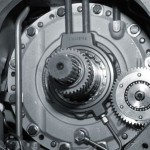Thursday, October 30, 2014
 Metal-on-metal contact is not the ideal situation for effective and safe
operation of any type of machine or motor vehicle. While metal pieces can fit together and work to make an object function, bare metal is not developed
to work well with other pieces of bare metal, especially if there is friction involved. Without any flexibility or natural lubricant, this metal-on-metal
often results in corrosion that causes permanent damage to moving parts and even contribute to the failure of the entire car, structure or machine.
Metal-on-metal contact is not the ideal situation for effective and safe
operation of any type of machine or motor vehicle. While metal pieces can fit together and work to make an object function, bare metal is not developed
to work well with other pieces of bare metal, especially if there is friction involved. Without any flexibility or natural lubricant, this metal-on-metal
often results in corrosion that causes permanent damage to moving parts and even contribute to the failure of the entire car, structure or machine.
One example of this is when brake pads aren’t changed at the appropriate time. Extensive use of these pads will cause them to wear away leaving nothing in between the caliper and rotor. Going forward, the two metal pieces just grind on each other causing corrosion. If this problem isn’t solved, significant damage can be done to both moving parts that might even require them to be replaced.
Two moving pieces of a major machine might work together seamlessly when properly lubricated. However, if the oil disintegrates due to heat and isn’t replaced, it creates another example of metal-on-metal interaction. This situation will likely lead to corrosion and the same damage, except depending on the size of the machine, this could affect the functionality of the whole piece of equipment.
In fact, the heat that is actually created from metal-on-metal impact can deteriorate the metal and corrode it. It can often result in rust as well that can just break right off the piece. No matter which way you look at it, there are major impacts that come along with metal-on-metal corrosion. Knowing what causes it and how to prevent it are the keys to never running into it as a major problem.
TAGGED AS:
- machine damage
- machining
- metal friction
- metal lubrication
